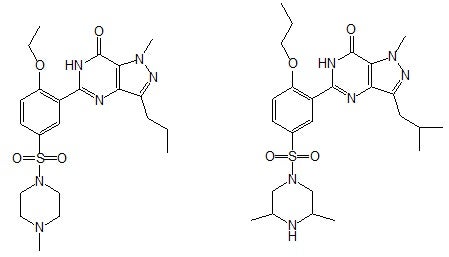The productive collaboration between Prof KOH Hwee Ling from the Department of Pharmacy in NUS, Dr KEE Chee Leong and Ms LOW Min Yong from HSA on the quality and safety of botanical health products, including screening for adulterants (undeclared drugs and drug analogues), has uncovered yet another analogue of sildenafil (the active ingredient in the erectile dysfunction drug Viagra).
This finding is important to healthcare professionals and potential consumers because toxicity data is not available. The presence of undeclared and unapproved drugs can be dangerous to consumers who unknowingly consume them. The safety and toxicity profiles are often unknown and there may be drug-herb interactions.
The high-resolution Orbitrap mass spectrometry can be used to elucidate propoxyphenyl isobutyl sildenafil at very low concentration. With the aid of suitable reference ions, the PDE-5 inhibitor analogue can be elucidated under different fragmentation modes. The accurate mass measurement of each product ions has been carried out with the aid of Mass Frontier software. The mass error of all product ions is not more than 5.0 ppm.

This figure shows the chemical structures of sildenafil and the new analogue, propoxyphenyl isobutyl aildenafil. [Picture credit: Dr KEE Chee Leong from HSA]
Reference
Kee CL, Koh HL, Bloodworth BC, Zeng Y, Kiang KH, Low MY, Ge X, “Structural elucidation of propoxyphenyl isobutyl aildenafil, adulterant in a health supplement using high-resolution Orbitrap mass spectrometry.” Journal of Pharmaceutical and Biomedical Analysis. 98 (2014) 153.


